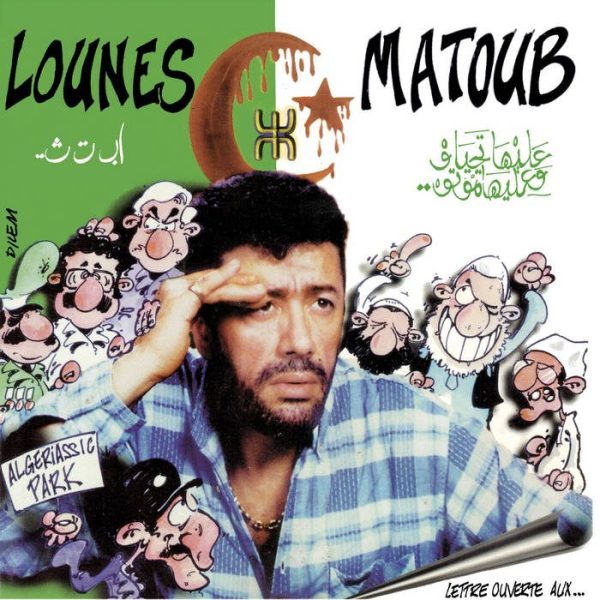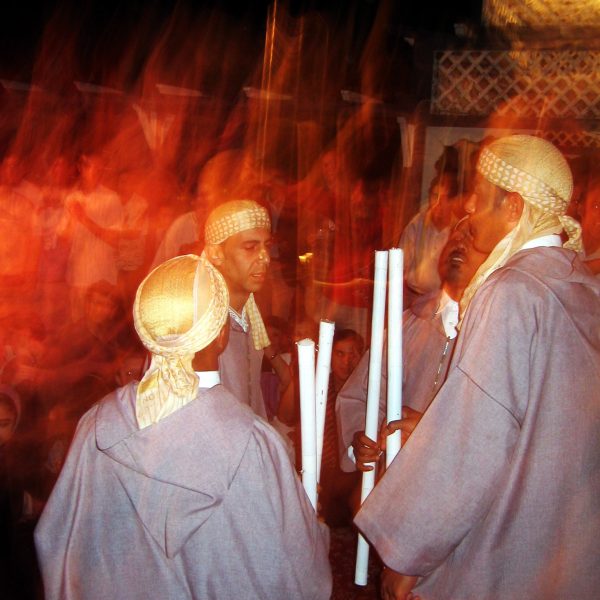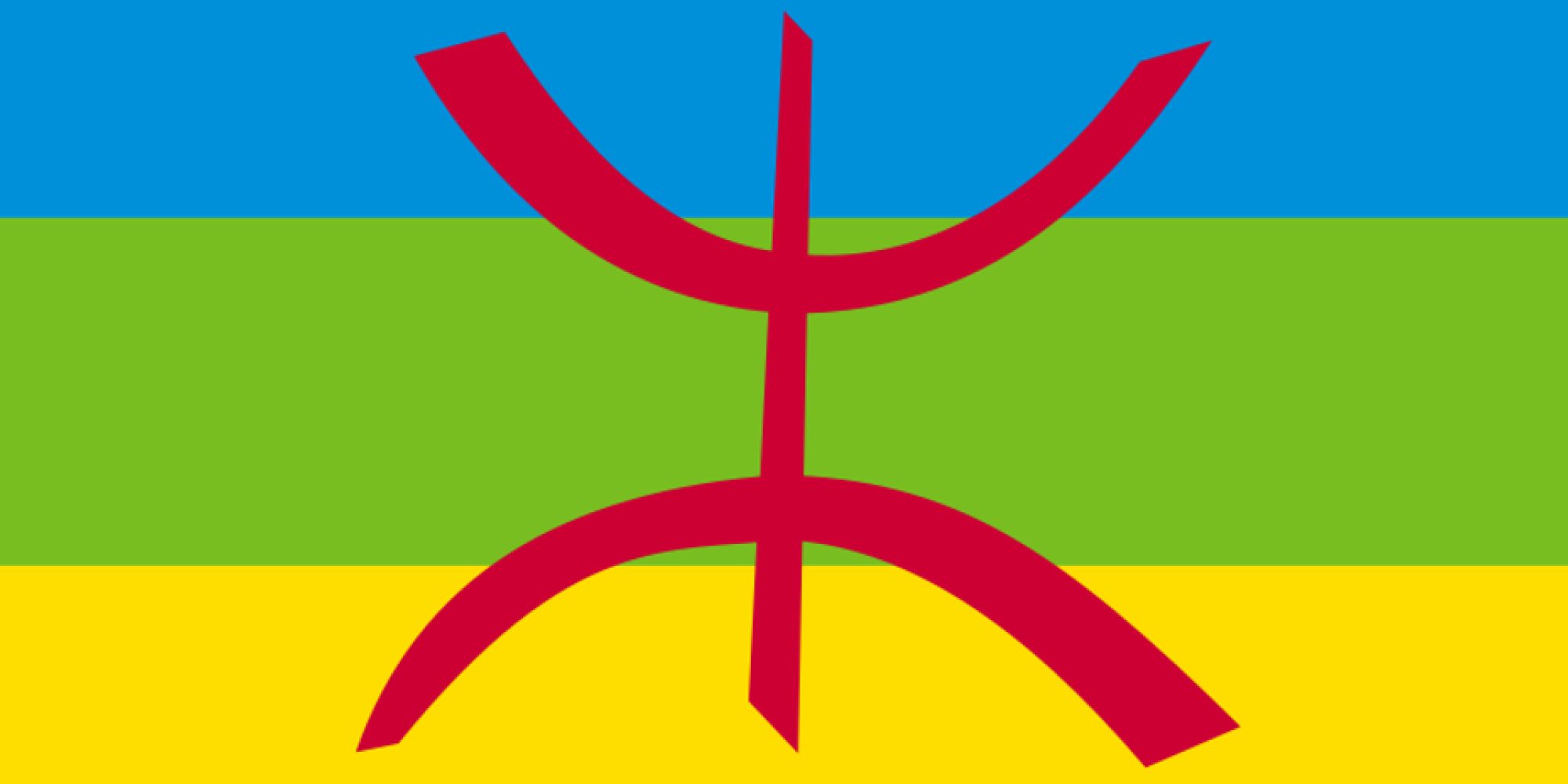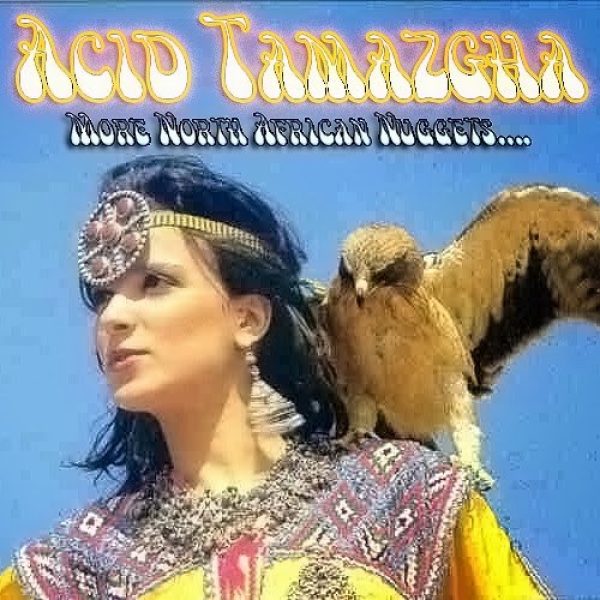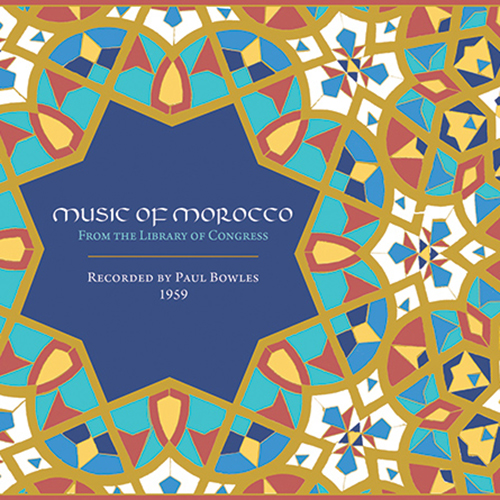The Imazighen, also known as Amazighen, are the indigenous peoples of North Africa. A majority of the world may know them as the “Moors” or “Berber,” a term coined by the Romans and popularized by the Arab conquerors of the region meaning “barbarian”; the natives have rejected this discriminatory term and prefer to call themselves Amazigh/Imazigh, meaning “free men” in the Tamazight language. Their territories stretched as far west as the Canary Islands and Mauritania and as far east as the Siwa Oasis in western Egypt, a region known as Maghreb. A majority of the Imazighen population are concentrated in Morocco and Algeria, and today more than half of the countries’ citizens claim Imazighen heritage and almost 30% speak the native Tamazight languages. A diverse group, the Imazighen consist of over 100 tribes and languages spanning across North Africa. These include the Tuareg, Mauri, Garamantes, Zenata, Masmooda, and Sinhajja peoples that were the big confederations that broke up and became the peoples of today.
As the native peoples, they’ve withstood centuries of invasions, including those of the Greeks, Romans, Phoenicians, Vandals, Byzantines, Turks, Arabs, and as recent as the 19th and 20th centuries, the French, Spanish, Italians, and British. The Arabs proved to be the most persistent, conquering the region and introducing Islam as the unifying religion. As with most colonizing powers, the conquerors subjected the native peoples to centuries of cultural suppression and erasure, forcing a common Arab identity beginning in the seventh century. The Muslim Arab invasion caused many groups to retreat to the mountains and deserts in an attempt to avoid Arab control and preserve their native traditions. Still, the Imazighen population persisted and even initiated trans-Saharan trade of gold and slaves.
During this time, many Imazighen warriors were enlisted by the Arabs for the conquest of Spain (Al-Andalus) and Tripoli in modern day Libya, and had incorporated Sudan into the Islamic world. As the native Almoravid and Almohads dynasties fell, they were succeeded by the mixed Imazighen-Muslim rule of the Marinid, Ziyanid, Hafsid, and Bejaia dynasties until the 16th century, when all Imazighen dynasties were replaced by Arabs, and Arabic had all but replaced Tamazight as the common verbal and written language. The native language remained tradition in southwestern Morocco and in the Sahara into modern times, but was only recently recognized by national governments in North Africa.
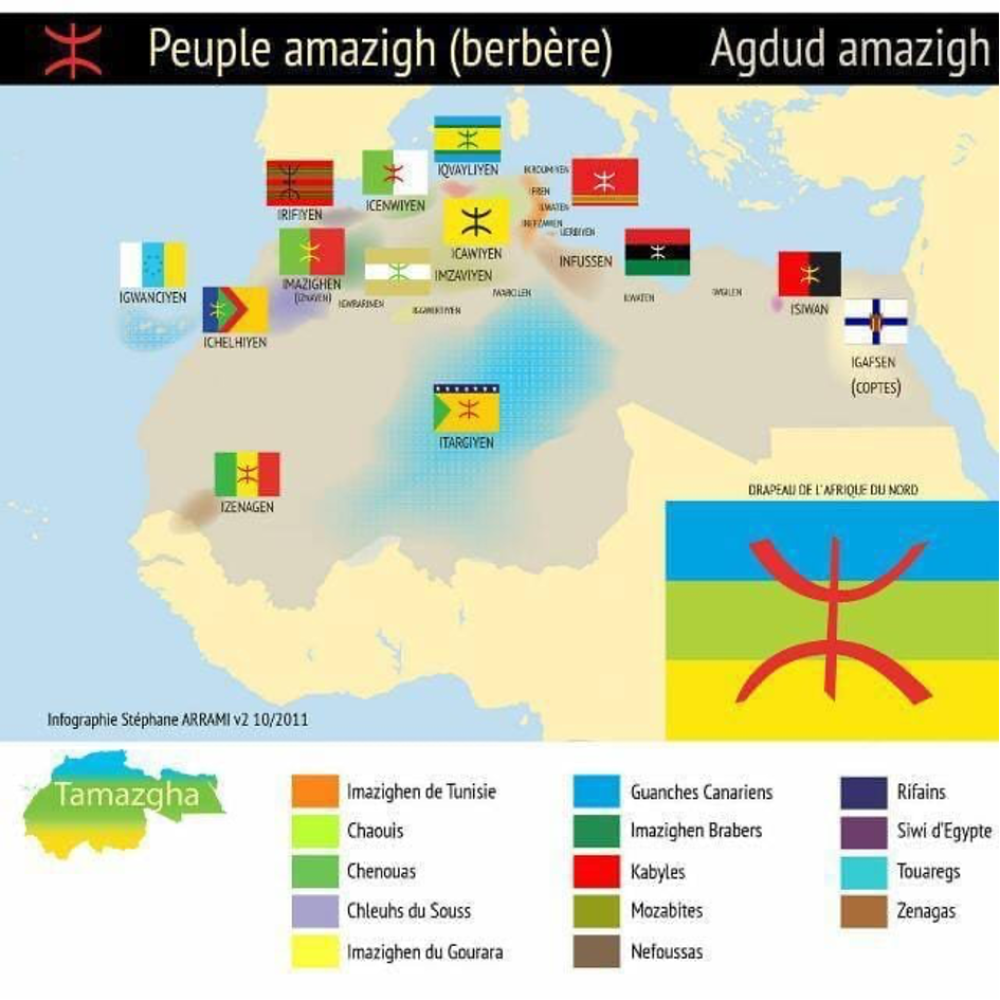
When the French colonized Algeria and Morocco in the 19th and 20th centuries, respectively, they further distinguished the Arab majority and pushed the “berber” term to isolate the Amazigh people in the mountains. By the 20th century, the native Imazighen peoples were reduced to enclaves around North Africa.
Imazighen descendants have continued to struggle to gain formal recognition of their culture, as well as an apology for the atrocities their people have faced from various governments. Following French colonialism, new government leaders continued to force Arabization and assimilation, effectively suppressing Imazighen identity by banning the use of the Tamazight languages, a main facet used to uphold the native culture.
Tensions remained high for decades but a boiling point was reached in 1980 during what is known as the “Berber Spring.” Imazighen advocates rallied against authorities who shut down a conference with Amazigh activist Mouloud Mammeri, who was going to give a lecture on Imazighen Kabyle poetry, at Hasnaoui University in Tizi-Ouzou, Algeria. This event gave rise to a new “Amazigh Cultural Movement” and a renewed push to formally recognize the Imazighen identity, especially in Algeria and Morocco.
In 1994, Morocco’s king became the first to acknowledge Imazighen heritage as important to Moroccan history and development, and supported the push to teach Tamazight in schools, followng mounting pressure surrounding the issue. Less than a decade later, in 2001, King Mohammed VI issued a mandate for the formation of the Institut Royal de la Culture Amazighe (IRCAM), which worked to raise awareness and support for Amazigh peoples throughout Morocco. IRCAM has continued to promote Imazighen culture and formed a Standard Moroccan Amazigh to be integrated into the school and media systems of the country. After centuries of turmoil, and after many advocates have been subjected to exile and assassination, Morocco’s constitution formally added recognition for the Amazigh identity and language in 2011, and Algeria followed suit in 2002. As recently as May 2023, progress is still being made with Morocco making Amazigh New Year an official holiday as Algeria did in 2017.

As the Amazigh have understood for years, language is key to cultural preservation, and music is a central part of that. There are many Amazigh groups, past and present, using music to uplift and spread their deep culture, including those heard in Afropop Worldwide’s Berber Rising program. Of particular note are the Tuareg artists, including Tinariwen (Mali), Mdou Moctar (Niger) and Bombino (Niger) among others, sing in Tamazight, with lyrics addressing prominent geopolitical issues. After being forced to flee Niger in his adolescence after the First Tuareg Rebellion, Bombino’s family settled in Algeria. There he honed in his appreciation of the Tuareg identity and embraced the guitar, a large symbol for the tribe. In 2007, following the Second Tuareg Rebellion, guitars were outlawed to further suppress the Imazighen peoples’ culture and the growing call for civil rights. Following their refusal to stop using the “weapon of peace” instrument, two of Bombino’s bandmates were executed and he was exiled to Burkina Faso.
Still continuing his anthems of Imazighen-pride, Bombino’s electrifying sounds of soul and psychedelia are still streamed all around the world. Having a classic rock feel, Bombino has worked with artists such as the Rolling Stones and performed all around the world. His 2013 hit “Tamiditine” off the album Nomad (Nonesuch Records Inc., WEA International Inc.) has a bright Beatles-esque sound with inspiration from Jimi Hendrix and melodies from the traditional Tuareg language. In 2019, Bombino was nominated for a Grammy for his album Deran.
Another artist who has made international ripples in music and Amazigh culture is the band Les Abranis, whose name stems from the Branis tribe in North Africa, known for their pacifist and reconciling nature among the other tribes. Started in 1967, the band was formed by two Algerian-Kabyle men in France. Shamy El Baz, as he’s known best, came to France after being tortured by the French army in his native country. Their music takes from garage-rock and funk and combines them with classic Kabyle melodies to produce a fusion of pentatonic rhythms that preach feelings of freedom. Les Abranis’ later work also moves into jazz and electronic mixes that still emphasize the Imazighen struggles and identity. Through the success of Tuareg, Kabyle and other Imazigh-related musical acts, the culture continues to rise and claim global recognition in the 21st century.
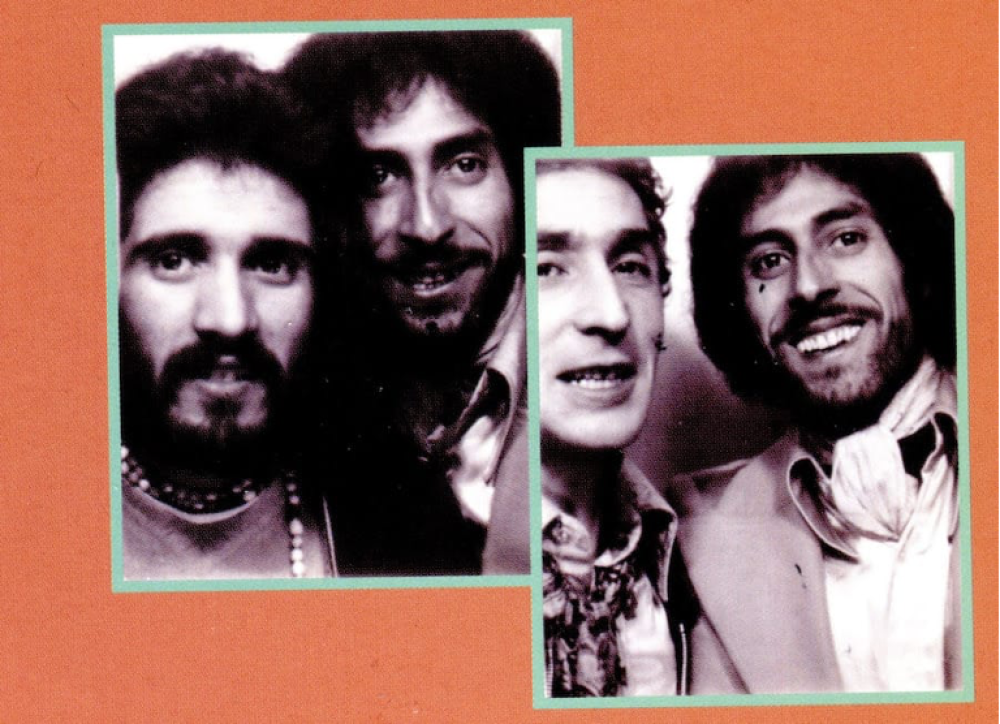
Sources
~"Respecting Identity: Amazigh Versus Berber" - Society for Linguistic Anthropology
~Berber Language Family, History & Culture | Britannica
~The Amazigh/Berber, Morocco's Impressive People - SAHARA DESERT TOUR
~Don't call us Berber, we are Amazigh
~Morocco - IWGIA - International Work Group for Indigenous Affairs
~The Amazigh Cultural Renaissance | The Washington Institute
~Bombino (musician) - Wikipedia
~Les Abranis: peace, love, and Kabylie
~https://abranis.bandcamp.com/album/amazigh-freedom-rock-1973-1983
Related Audio Programs
